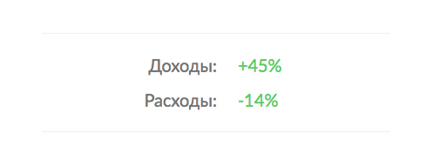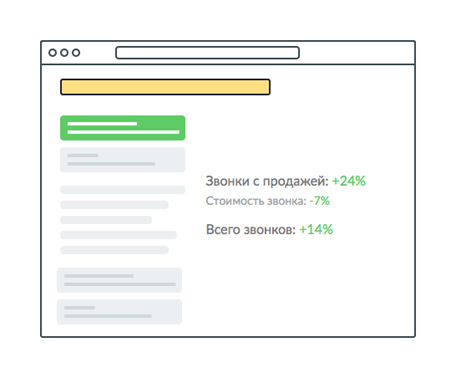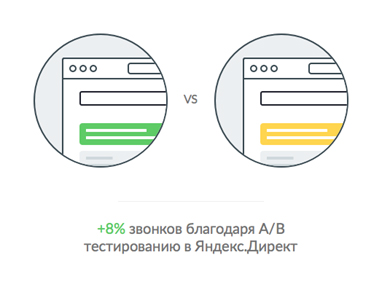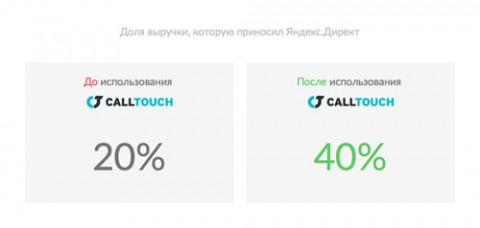Making online advertising effective offline
How to improve one of the most effective advertising channels? We understand the example of a large online furniture store.

A significant number of sales of our client bring offline channels: the number of customers who order furniture by phone or buy it in the showroom reaches 60% (40% call the company, 20% come to the showroom). In this case, the average bill for a purchase by phone is 27 thousand rubles, with a personal visit - 40 thousand rubles. There are another 40% of people who make purchases on the store's website, the average cost of which is 20 thousand rubles. We know everything about this audience, thanks to customized analytics counters. Therefore, for a long time, the question remained open to us who are these 60% of the offline audience, to attract which we spend 50% of the advertising budget every month (from 5 to 15 million rubles)?
')
We tried to find out on our own and used two methods of analytics.
1) Static call tracking. For each city where there is a branch, we bought a pool of telephone numbers and placed them in different advertising channels. One used for banner outdoor advertising, the second - for advertising on radio, the third - in contextual advertising. Accordingly, when a client called the company, it became obvious what source of advertising led him.
2) Unique code. Each visitor to the store site received a unique code (a set of numbers), which had to be called the company's manager when calling. The code corresponded to a certain source of advertising and, thus, it became clear which of them worked better.
As a result, however, we were forced to abandon both methods. The first turned out to be too expensive and labor-intensive. The effectiveness of the second was hampered by the human factor: sales managers often forgot to clarify the buyer's code or entered it into the database with errors. At this time, call-tracking services appeared that are intended to study the audience preferring offline communication channels. The service allowed significant savings on the purchase of telephone numbers and made it possible to process the data obtained automatically.
Thus, the brand continued the history of working with contextual advertising on Yandex.Direct with one such service, which provided the company with the necessary pool of numbers, and at the same time removed its dependence on the human factor.
1) Bundle offline and online
First of all, we found out how many potential buyers who called the company actually reach the showroom. To do this, we analyzed the sales model, which is folded according to the scenario: the customer visits the site, selects the product they like, then calls the shop with clarifying questions. Having received the information of interest, he goes to the showroom in order to finally establish himself in the choice and make a purchase.

Thus, in order to find out the source of advertising, it was necessary to combine the telephone numbers of complete strangers who called the company with the contacts of customers who had reached the showroom. For a while this question remained open, but the answer to it also helped to find a call-tracking service.
It automatically determines the phone number from which the customer is calling, no matter if it is city or mobile. By itself, this is valuable information, but we did not understand how to use it to solve the problem. Therefore, we went further and combined it with data about people who made a purchase in the showroom. The coincidence was about 90% and made it possible to identify sources of advertising that lead the maximum number of end customers.
Case demonstrates how important it is to track calls and requests not only on the site, but also offline (showroom). Finding out which sources of advertising lead real buyers, you can decide how best to spend the marketing budget.

The next stage of development dealt with a deeper immersion in the analysis. Marketers have found that general requests for upholstered furniture, advertising campaigns for the colors of sofas and for some competitors on Yandex.Direct do not actually bring sales. Therefore, their budget was allocated in favor of effective campaigns on the models of sofas and sales requests: “buy a sofa”, “order a sofa”. Along the way, we found out that the average bill for the request “to buy a sofa” is 20 thousand rubles, and “to buy a sofa sale cheaply” - 30 thousand rubles. Paradoxically, people who want to save on the purchase and go on sales, in reality, spend more.
2) Analysis of paid traffic at the level of Yandex.Direct keywords
But just to know which keywords work is not enough, you need to understand how many sales they bring. Thanks to the call tracking service, the brand found out that some requests bring a lot of orders through calls, but few from the site. For example, a large number of end customers call for inexpensive requests: "sofa store", "buy a sofa in the store", "sofa Atlanta." Having distributed the budget for these requests from less efficient ones, the store increased the number of calls by 31%, reducing the cost of requests by 19%. At the same time, the calls that ended with sales increased by 27%.

In general, thanks to the received analytics, the redistribution of the budget in favor of profitable keywords made it possible to increase the income of advertising campaigns in Yandex.Direct by 45%, while the total cost reduction by 14%.

3) Low-level optimization in Yandex.Direct
The next step for Profitator’s specialists was to determine the profitable places for advertising Yandex.Direct. It turned out that special placement, although it costs more than guaranteed, is justified for a number of campaigns and allowed to increase the number of calls bringing sales by 24%, reducing their cost by 7%. At the same time, the total number of calls increased by 14%.

4) Study the behavior of the calling audience
The answer to the question of where to place an advertisement depends on the time of day.
Having identified the peaks of the activity of the calling customers, we learned at what time the conversion of orders from the site is reduced. For example, the conversion to purchases through the basket from 19:00 to 20:00 decreases by 31% relative to the average per day, but the conversion to calls increases by 35%. In this simple example, we see how call-tracking data helped to avoid errors. At first glance, the right step would be to lower the rate on advertising at this time, but given that few people in our market track calls and know about these patterns, the cost of a click on Yandex.Direct during this period of time is steadily decreasing and customers are cheaper .
5) Analysis of the quality of work of employees
No optimization of advertising will not help to get more sales, if the level of service is lame. Brand wanted to find out how employees communicate with customers. However, the development of its own interface for PBXs was expensive, so the company took advantage of the solution of our call-tracking operator, whose “Personal Account” stores the records of each call. Store sales managers regularly listen to colleagues' conversations, and, if they find errors, send a record to the supervisor by mail, providing the letter with a detailed commentary.
6) A / B tests
The result of the Yandex.Direct campaign depends on the text of the ads. A / B tests helped to choose effective ones: analysts measured which texts brought the most "corrupt" calls. To do this, they prepared several variants of announcements with different phone numbers, and then through the call tracking service they traced the number of people calling from. By focusing on working texts, the store increased calls from Yandex.Direct by 8%.

Prior to cooperation with the call tracking service, the share of revenue that Yandex.Direct brought to the store was 20%; after installation, the share of the channel rose to 40%.
On the example of the case, it is clearly seen how the return on advertising can grow if you carefully approach the evaluation of effectiveness. We always recommend advertisers to be conscious of their placement - try to keep track of all sales channels and optimize advertising settings in accordance with the objectives of the business. Now many categories of advertisers are redistributing budgets in favor of the channels that most successfully attract customers, and with this task their approaches to assessing this effectiveness and optimizing advertising are increasingly evolving. We see that in entire industries, where the majority of advertisers used to focus on clicks or, at best, on achieving individual goals on the website, they are now building full-fledged sales funnels, taking into account various channels of communication with customers and pending conversions, . This is an expected and very good trend for the market, which underpins its development, the Yandex press service comments on the results achieved.


A significant number of sales of our client bring offline channels: the number of customers who order furniture by phone or buy it in the showroom reaches 60% (40% call the company, 20% come to the showroom). In this case, the average bill for a purchase by phone is 27 thousand rubles, with a personal visit - 40 thousand rubles. There are another 40% of people who make purchases on the store's website, the average cost of which is 20 thousand rubles. We know everything about this audience, thanks to customized analytics counters. Therefore, for a long time, the question remained open to us who are these 60% of the offline audience, to attract which we spend 50% of the advertising budget every month (from 5 to 15 million rubles)?
')
We tried to find out on our own and used two methods of analytics.
1) Static call tracking. For each city where there is a branch, we bought a pool of telephone numbers and placed them in different advertising channels. One used for banner outdoor advertising, the second - for advertising on radio, the third - in contextual advertising. Accordingly, when a client called the company, it became obvious what source of advertising led him.
2) Unique code. Each visitor to the store site received a unique code (a set of numbers), which had to be called the company's manager when calling. The code corresponded to a certain source of advertising and, thus, it became clear which of them worked better.
As a result, however, we were forced to abandon both methods. The first turned out to be too expensive and labor-intensive. The effectiveness of the second was hampered by the human factor: sales managers often forgot to clarify the buyer's code or entered it into the database with errors. At this time, call-tracking services appeared that are intended to study the audience preferring offline communication channels. The service allowed significant savings on the purchase of telephone numbers and made it possible to process the data obtained automatically.
Thus, the brand continued the history of working with contextual advertising on Yandex.Direct with one such service, which provided the company with the necessary pool of numbers, and at the same time removed its dependence on the human factor.
1) Bundle offline and online
First of all, we found out how many potential buyers who called the company actually reach the showroom. To do this, we analyzed the sales model, which is folded according to the scenario: the customer visits the site, selects the product they like, then calls the shop with clarifying questions. Having received the information of interest, he goes to the showroom in order to finally establish himself in the choice and make a purchase.

Thus, in order to find out the source of advertising, it was necessary to combine the telephone numbers of complete strangers who called the company with the contacts of customers who had reached the showroom. For a while this question remained open, but the answer to it also helped to find a call-tracking service.
It automatically determines the phone number from which the customer is calling, no matter if it is city or mobile. By itself, this is valuable information, but we did not understand how to use it to solve the problem. Therefore, we went further and combined it with data about people who made a purchase in the showroom. The coincidence was about 90% and made it possible to identify sources of advertising that lead the maximum number of end customers.
Case demonstrates how important it is to track calls and requests not only on the site, but also offline (showroom). Finding out which sources of advertising lead real buyers, you can decide how best to spend the marketing budget.

The next stage of development dealt with a deeper immersion in the analysis. Marketers have found that general requests for upholstered furniture, advertising campaigns for the colors of sofas and for some competitors on Yandex.Direct do not actually bring sales. Therefore, their budget was allocated in favor of effective campaigns on the models of sofas and sales requests: “buy a sofa”, “order a sofa”. Along the way, we found out that the average bill for the request “to buy a sofa” is 20 thousand rubles, and “to buy a sofa sale cheaply” - 30 thousand rubles. Paradoxically, people who want to save on the purchase and go on sales, in reality, spend more.
2) Analysis of paid traffic at the level of Yandex.Direct keywords
But just to know which keywords work is not enough, you need to understand how many sales they bring. Thanks to the call tracking service, the brand found out that some requests bring a lot of orders through calls, but few from the site. For example, a large number of end customers call for inexpensive requests: "sofa store", "buy a sofa in the store", "sofa Atlanta." Having distributed the budget for these requests from less efficient ones, the store increased the number of calls by 31%, reducing the cost of requests by 19%. At the same time, the calls that ended with sales increased by 27%.

In general, thanks to the received analytics, the redistribution of the budget in favor of profitable keywords made it possible to increase the income of advertising campaigns in Yandex.Direct by 45%, while the total cost reduction by 14%.

3) Low-level optimization in Yandex.Direct
The next step for Profitator’s specialists was to determine the profitable places for advertising Yandex.Direct. It turned out that special placement, although it costs more than guaranteed, is justified for a number of campaigns and allowed to increase the number of calls bringing sales by 24%, reducing their cost by 7%. At the same time, the total number of calls increased by 14%.

4) Study the behavior of the calling audience
The answer to the question of where to place an advertisement depends on the time of day.
Having identified the peaks of the activity of the calling customers, we learned at what time the conversion of orders from the site is reduced. For example, the conversion to purchases through the basket from 19:00 to 20:00 decreases by 31% relative to the average per day, but the conversion to calls increases by 35%. In this simple example, we see how call-tracking data helped to avoid errors. At first glance, the right step would be to lower the rate on advertising at this time, but given that few people in our market track calls and know about these patterns, the cost of a click on Yandex.Direct during this period of time is steadily decreasing and customers are cheaper .
5) Analysis of the quality of work of employees
No optimization of advertising will not help to get more sales, if the level of service is lame. Brand wanted to find out how employees communicate with customers. However, the development of its own interface for PBXs was expensive, so the company took advantage of the solution of our call-tracking operator, whose “Personal Account” stores the records of each call. Store sales managers regularly listen to colleagues' conversations, and, if they find errors, send a record to the supervisor by mail, providing the letter with a detailed commentary.
6) A / B tests
The result of the Yandex.Direct campaign depends on the text of the ads. A / B tests helped to choose effective ones: analysts measured which texts brought the most "corrupt" calls. To do this, they prepared several variants of announcements with different phone numbers, and then through the call tracking service they traced the number of people calling from. By focusing on working texts, the store increased calls from Yandex.Direct by 8%.

Prior to cooperation with the call tracking service, the share of revenue that Yandex.Direct brought to the store was 20%; after installation, the share of the channel rose to 40%.
On the example of the case, it is clearly seen how the return on advertising can grow if you carefully approach the evaluation of effectiveness. We always recommend advertisers to be conscious of their placement - try to keep track of all sales channels and optimize advertising settings in accordance with the objectives of the business. Now many categories of advertisers are redistributing budgets in favor of the channels that most successfully attract customers, and with this task their approaches to assessing this effectiveness and optimizing advertising are increasingly evolving. We see that in entire industries, where the majority of advertisers used to focus on clicks or, at best, on achieving individual goals on the website, they are now building full-fledged sales funnels, taking into account various channels of communication with customers and pending conversions, . This is an expected and very good trend for the market, which underpins its development, the Yandex press service comments on the results achieved.

Source: https://habr.com/ru/post/292044/
All Articles